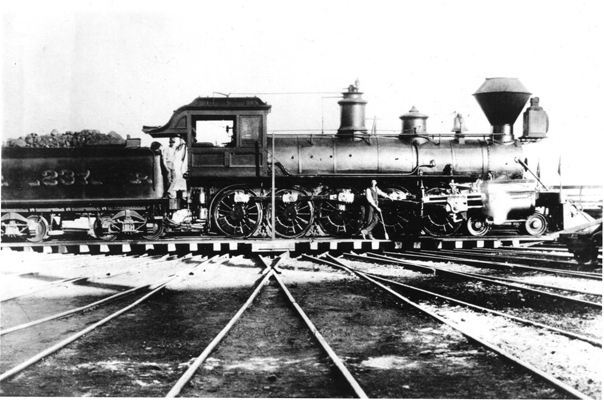El Gobernador was a steam locomotive built for the Union Pacific in 1885. It was one of the largest locomotives of its time, designed specifically to handle heavy trains on difficult terrain.

Key facts about El Gobernador:
- It was a 4-10-0 type locomotive, featuring four leading wheels and ten driving wheels.
- The design aimed to provide greater traction for hauling freight trains over steep grades on the Union Pacific network.
- Due to its size and weight, it encountered operational problems, such as excessive rail wear and difficulty navigating curves.
- Despite its power, the locomotive was not a success and was retired after only a few years of service.
El Gobernador is an example of 19th-century railroad companies’ efforts to build more powerful locomotives to accommodate increasing rail traffic. However, not all innovations proved practical in the long run.
El Gobernador proved a few important things about locomotive design and rail operations in the 19th century:
- Bigger Isn’t Always Better – The locomotive was built to be powerful, but its massive size and weight caused operational issues, like excessive rail wear and difficulty navigating curves. This showed that simply adding more wheels and power wasn’t always the best solution.
- Engineering Limits – The locomotive highlighted the mechanical and structural limitations of railroad technology at the time. The tracks and infrastructure couldn’t always support such a heavy locomotive, leading to inefficiencies.
- Experimentation Leads to Progress – Even though El Gobernador wasn’t a long-term success, its design contributed to later improvements in locomotive engineering. Railroads learned from its flaws and refined locomotive designs to balance power, efficiency, and practicality.
- Specialization is Key – Instead of using oversized locomotives for all tasks, railroads moved toward specialized locomotives designed for specific terrains and train types, improving overall efficiency.
In short, El Gobernador was an ambitious experiment that demonstrated the need for balance between power and practicality in locomotive design. It helped shape the future of rail technology by showing what worked—and what didn’t.